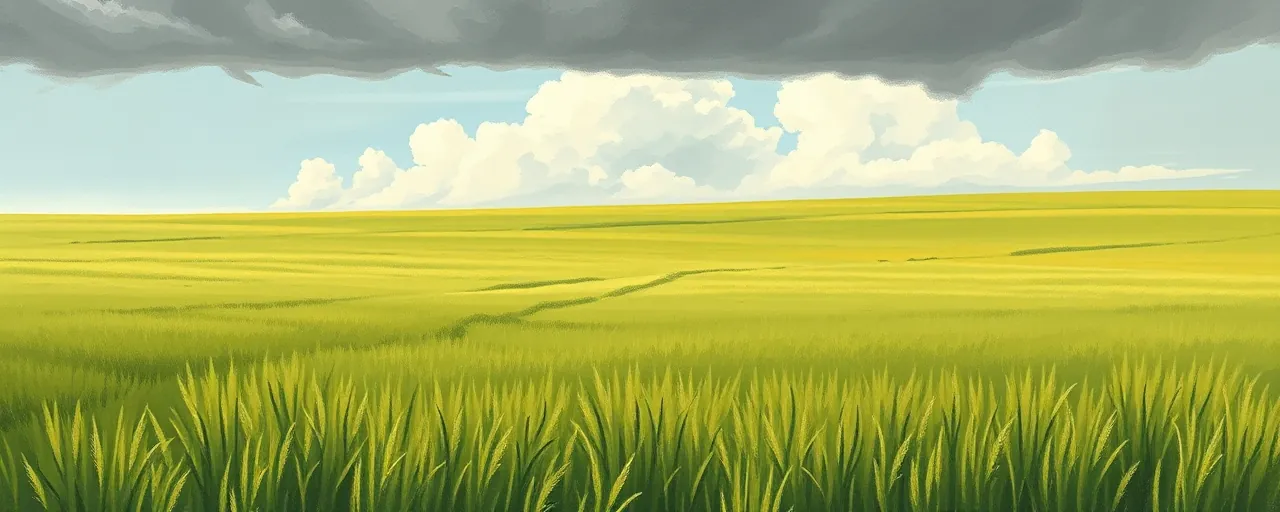A Spotlight on North Dakota's Agricultural Heart
North Dakota’s sprawling fields and cutting-edge research facilities welcomed U.S. Agriculture Secretary Brooke L. Rollins on April 22, 2025, as she joined local leaders to explore the state’s role in shaping the future of American farming. Accompanied by Senator John Hoeven, Congresswoman Julie Fedorchak, Governor Kelly Armstrong, and state agriculture commissioner Doug Goehring, Rollins engaged directly with farmers, researchers, and students. The visit underscored North Dakota’s dual legacy: a powerhouse in traditional crops like wheat and sugar beets, and a leader in precision agriculture technologies transforming how food is grown.
The delegation’s itinerary was packed with purpose. A roundtable at North Dakota State University (NDSU) gathered voices from farmers, commodity groups, and agribusinesses to discuss priorities for the next Farm Bill, a critical piece of legislation that shapes federal support for agriculture. Tours of Grand Farm’s technology demonstrations and American Crystal Sugar’s facilities highlighted innovation and economic stakes. Beyond the photo ops, the visit signaled a broader commitment to addressing the real-world challenges farmers face, from natural disasters to global trade pressures.
Rollins announced $340.6 million in disaster relief for farmers across 31 states, including $5 million to rebuild North Dakota’s storm- and wildfire-damaged electric infrastructure. She also unveiled new tariffs on imported products with over 65% sugar content, a move to bolster domestic sugar producers. These actions reflect a federal push to stabilize rural economies while navigating the complexities of international trade and climate-driven disruptions.
For farmers in North Dakota and beyond, the visit was more than symbolic. It was a chance to voice concerns about rising costs, unpredictable weather, and the need for policies that keep small and medium-sized farms afloat. As the USDA works to put 'Farmers First,' the trip offered a glimpse into how federal priorities might translate into tangible support.
Precision Agriculture Takes Center Stage
At Grand Farm, a hub for agricultural innovation, Rollins and her delegation witnessed demonstrations of precision agriculture technologies that are reshaping farming. Tools like GPS-guided tractors, variable rate applicators, and remote sensors allow farmers to optimize seed placement, reduce fertilizer use, and monitor crop health with unprecedented accuracy. These advancements promise to cut costs and environmental impact while boosting yields, a critical edge in an era of tight margins and labor shortages.
North Dakota is at the forefront of this shift. Over 70% of large-scale farms in the U.S. now use autosteering systems, and 68% employ yield monitors, with adoption rates even higher among the state’s commercial operations. Partnerships between NDSU, Grand Farm, and the USDA’s Agricultural Research Service have driven progress in sensors and data automation, tailoring solutions for smaller farms too. Yet, high upfront costs and technical expertise remain barriers for widespread adoption, particularly for family-run operations.
The economic stakes are significant. Precision agriculture is projected to grow into an $11.48 billion industry by 2033, fueled by federal investments like a $35 million National Science Foundation grant in 2024. Farmers using these tools report up to 9% less herbicide use and 6% lower fuel consumption. However, scaling these benefits to diverse farm sizes requires policies that balance innovation with accessibility, a challenge the next Farm Bill will need to address.
Navigating Trade and Sugar Policy
The announcement of additional tariffs on high-sugar imports sparked immediate discussion. U.S. sugar policy, built on tariff-rate quotas and domestic price supports, keeps prices roughly double the global average, benefiting about 4,000 sugar beet and cane farms. North Dakota’s American Crystal Sugar, a cooperative of 2,800 farmers, is a key player in this system. The new tariffs aim to shield these producers from foreign competition, aligning with a broader 'America First' trade approach.
Yet, the policy has trade-offs. Higher sugar prices cost consumers and food manufacturers an estimated $2.4 to $4 billion annually, contributing to 17,000 to 20,000 job losses in sugar-intensive industries. Trade disputes with major exporters, including past tensions with Mexico, highlight the risks of protectionism. The U.S. agricultural trade deficit, projected at $49 billion in 2025, adds urgency to balancing domestic support with global competitiveness.
Voices from the food industry argue for easing import restrictions to lower costs, while sugar farmers emphasize the need for stability in a volatile market. The USDA’s latest move suggests a firm commitment to domestic producers, but it may complicate broader trade negotiations at a time when export markets are critical for American agriculture.
Disaster Relief and Economic Pressures
The $340.6 million disaster relief package, including North Dakota’s $5 million share, responds to a brutal streak of storms, wildfires, and hurricanes that have battered rural communities. Federal programs now cover up to 90% of insured losses and 70% of uninsured ones, offering a lifeline to farmers facing financial strain. With net farm income projected to hit $180.1 billion in 2025, largely due to $42.4 billion in government payments, this aid is a critical buffer.
Still, challenges persist. Delays in distributing funds and complex eligibility rules frustrate farmers, many of whom are still grappling with unpaid bills from 2024. Over 50% of U.S. farmers report financial stress, worsened by low commodity prices and rising labor and equipment costs. The USDA’s focus on streamlining aid delivery will be tested as climate-driven disasters grow more frequent, raising questions about the long-term sustainability of ad hoc relief.
Looking Ahead With Cautious Optimism
North Dakota’s farmers left the USDA visit with a sense of being heard, but the path forward remains uncertain. The next Farm Bill, delayed by congressional gridlock, must reconcile competing priorities: robust safety nets, innovation funding, environmental goals, and nutrition programs. Stakeholders across the spectrum—from large agribusinesses to small organic farms—are pushing for policies that reflect their realities, making compromise essential.
As the USDA builds on commitments to rural America, the interplay of disaster aid, trade policy, and technological innovation will shape the agricultural landscape. For now, North Dakota stands as a microcosm of the challenges and opportunities facing U.S. farmers, where resilience and ingenuity meet the hard realities of a changing world.
